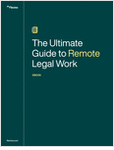Industrial revolution, information revolution, Internet revolution. The more things change, the more they stay the same. Lawyers resist change; it makes the job harder. However, we live with and adapt to change every day. The Web is undergoing another revolution, a sea change in the world of work and information, and “Web 2.0″ is just the new buzzword in a feeble attempt to describe whatever the Internet is becoming.
In the early years of the Web, the focus was on taking information, putting it in digital form, and making the information searchable and available via computers. The earliest Web browsers were just an attempt to make the information more readable and easier to find. Then, software was developed to make that information usable for tasks that had previously required personal or telephonic or written communications with the customer or user. Scripts allowed Web users to provide information to the Web host, and permitted the host to provide services based upon that information.




